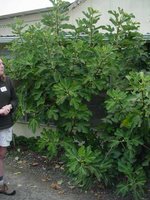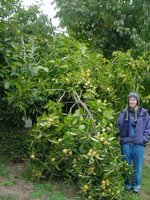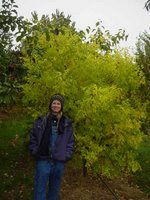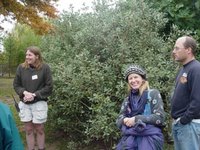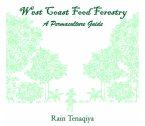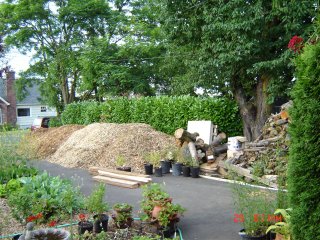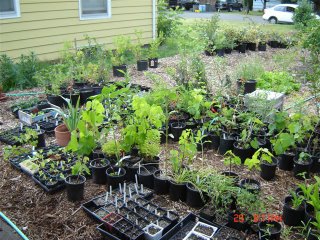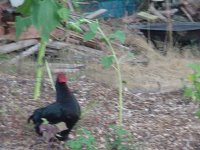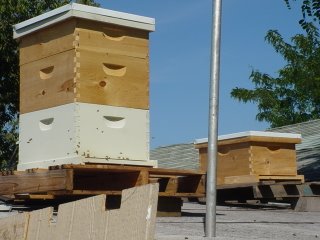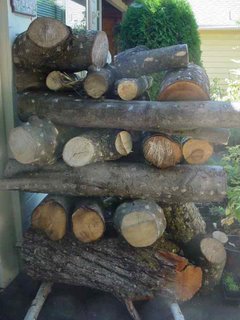Review
I've finally read Paul Stamets' Mycelium Running: How Mushrooms Can Help Save the World, which has been on my list for some time. It's an excellent assembly of the ways in which mushrooms can be used for real-world applications, from growing in your yard for edible and medicinal use to filtering contaminated water to speeding the regeneration of clear-cut landscapes. A while back I started reading Stamets' The Mushroom Cultivator, mistakenly believing I needed to read his books in order. I was turned off by the book, finding its detailed descriptions of how to set up a sterilized mushroom lab boring and impractical for a world of energy descent. My friends Torey and Briannah recently assured me that The Mushroom Cultivator and Growing Gourmet and Medicinal Mushrooms are not prerequisites for Mycelium Running, acting rather as companion volumes with details on laboratory-based cultivation.
Much of the information in Mycelium Running I had already picked up from friends, glancing through the book in the past, reviewing other Stamets and Fungi Perfecti writings, hanging out with permaculture people, etc. But it was good to read through it all at once and get an organized presentation of some of the possibilities. It's clear that the functions and human uses of mushrooms are only barely understood so there's plenty of learning still to be done.
I found it interesting comparing Stamets' world-view with some of my realizations and insights from other authors. Even though the book was published in 2005, Stamets doesn't seem to have been aware of Peak Oil while writing, or at least doesn't give any indication that he expects civilization to deviate from its course of ever-onward progress. He does express concern about various environmental issues, but doesn't say a thing about changing the behavior that causes the problems, either at an immediate direct-cause level or at a root-cause level. He simply presents ways that mushrooms can remediate some of the damage, allowing us to continue on our path. Several of these remediation techniques still rely on high-complexity organization for deployment. In general, Stamets' philosophy strikes me as a variation on "technology will save us", except that Stamets believes it's mushrooms that will save us (and as much as says so in the book's subtitle). There's also an echoed theme of faith in science as the path towards betterment of humankind.
Despite those big-picture blindspots, Stamets is one of the foremost mycologists in the world, doing cutting-edge research and dissemination of this sort of information, putting it into the hands of lay-people who can run with it. The book is an invaluable resource and I will definitely be buying a copy for my library.
Our Fungal Plans
Last September, in The Birds and the Bees, I mentioned the logs we inoculated with shitake and oyster mushrooms. We have since moved the logs away from the house, where our friends warned us they might attack the wood. The shitakes are now piled in the back yard, and we spread the oyster mushroom logs (several of which are already fruiting a tiny bit) through the front yard, half-burying them in the wood chips. Since oysters are very aggressive mushrooms, we're assuming that they'll continue to dominate the logs without concern of other fungi invading from the ground (which is why you usually elevate your mushroom logs on a pallet). In fact, the oysters may well start to colonize the surrounding wood chips.
I have a few other plans for fungal experimentation:
- Grow oyster mushrooms in buckets of coffee grounds, which we get for free from two local coffee places. We should be able to use our fruiting oyster mushrooms as inoculant for the grounds
- When we come across more fresh-cut wood, add some into the pile of shitake logs to be colonized by the existing logs. Maybe put some adjacent to the oyster mushroom logs in the front yard, too. As the shitake logs fruit, we'll at least shake spores onto the new logs, and maybe do a more deliberate spore-slurry creation and inoculate the new logs.
- We're taking out all the asphalt in the yard, which will free up about 1300 square feet of driveway and walkways for growing things. The ground underneath is probably somewhat contaminated by the petroleum sludge leachings, so we'll try inoculating woodchips across the whole area with oyster mushrooms, which break down hydrocarbons.
- I want to get Fungi Perfecti's "Three Amigos" Garden Pack of outdoor patch mushroom spawn. This includes the Garden Oyster (Hypsizygus ulmarius), the Garden Giant (Stropharia rugoso-annulata) and the Shaggy Mane (Coprinus comatus). We'll start them off by inoculating a wood chip patch for each type. As the mycelium spread through the patch, we can transplant clumps throughout the yard. In theory, so long as we keep them refreshed with organic matter, they'll naturalize and become permanent growers in the landscape.
Ever since I saw Dave Jacke's diagram of nutrient and material flows in a mature forest ecological community, I've been excited about the potential for harnessing the decomposer cycle. (I think I saw his diagram at a presentation; I can't find it in his book Edible Forest Gardens.) The diagram showed how the vast majority of energy in a system flows through the microbial level, especially decomposers. If that decomposer niche can be influenced towards species producing food for humans we can tap into a lot of extra energy. I look forward to continuing my baby steps in integrating edible mushrooms into the rest of what we're doing!

